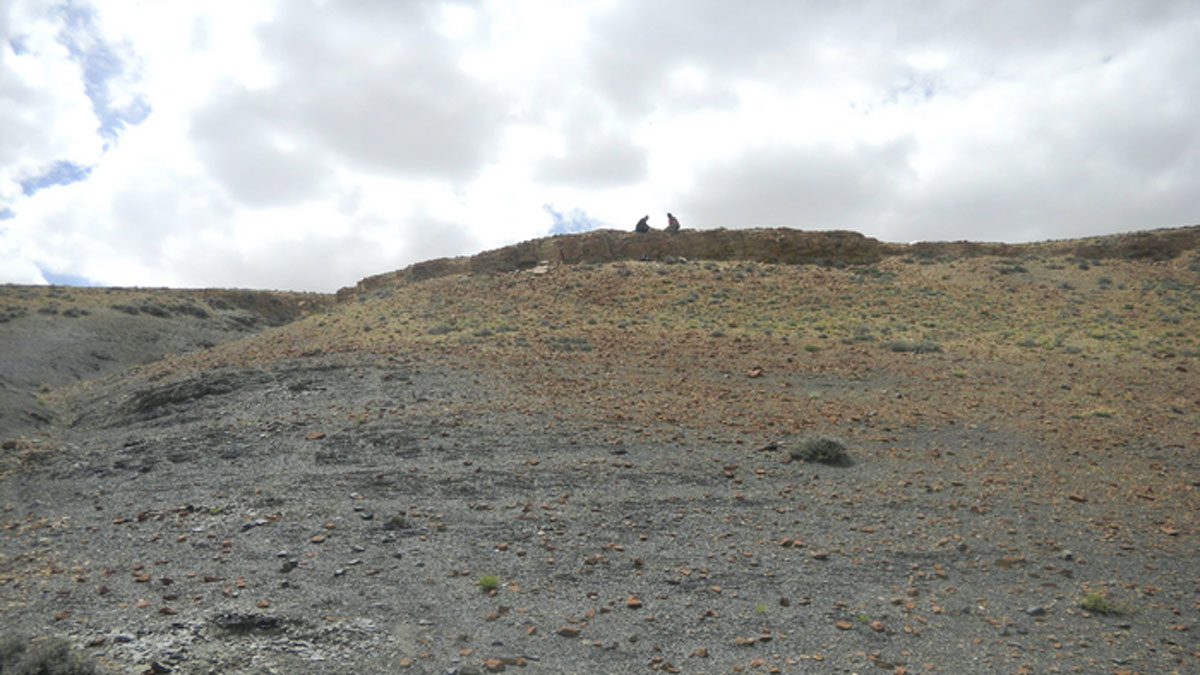About 252 million years ago, a fiery apocalypse known as the end-Permian extinction, or “Great Dying,” killed more than 80% of sea life and 70% of terrestrial species. Basalt lava oozed and belched out of fissures in the Earth for hundreds of thousands of years, spewing methane, carbon dioxide, sulfur dioxide, and other greenhouse gases into the atmosphere over what is now Siberia.
Researchers think that sea life such as trilobites went extinct because of resulting ocean acidification and anoxia, but experts still debate exactly what killed terrestrial plants and animals. A popular theory is that toxic volcanic chemicals weakened the ozone layer—similar to the effect of chlorofluorocarbons (CFCs) in the late 20th century—increasing harmful ultraviolet B (UVB) radiation at the surface.
To test this idea, researchers turned to fossilized pollen grains from an ancient conifer. They found that the plants increased their production of a sort of chemical sunscreen after the volcanoes began erupting, scientists reported this January in Science Advances.
Pollen Provides the Key
The Permian period, which lasted for about 50 million years, was an eventful one for life on land. Plant and animal groups became better adapted to dry land, colonizing the vast supercontinent of Pangaea, and vertebrates grew larger and more agile. But the end-Permian forced a hard reset on terrestrial ecosystems that would rewrite the story of life on land. For decades, researchers have asked, What caused such dramatic devastation?

A depleted ozone layer, compromised by volcanic activity, could have made life nearly inhospitable. The layer protects life from harmful UVB radiation, which hurts plant reproduction and development and causes cancer in animals, with repercussions that ripple across the entire food web.
To see whether they could find direct evidence that plants suffered from increased radiation exposure coinciding with volcanic activity, researchers collected rock samples spanning from a few hundred thousand years before to a few hundred thousand years after the end-Permian extinction event. In all, they collected 32 rock samples, each corresponding to a different slice of geologic time. They processed the rocks with acids that removed mineral components, leaving behind only organic materials, including fossilized pollen grains.
After that, “the main challenge [was] to laboriously pick out individual pollen grains from the processed rock samples,” said Phillip Jardine, a paleobotanist at the University of Münster and one of the authors of the study.
The grains, each half the width of a human hair, had to be identified under a microscope and individually tested for UVB-absorbing compounds. Researchers used a technique called Fourier transform infrared microspectroscopy, which allows scientists to detect chemical signatures using infrared light. The team tested roughly 30 grains per rock sample, scanning more than 1,000 pieces of pollen in total.
“[Radiation exposure] has been proposed as a scenario for the extinction previously, but this is the first time that it could actually be proven.”
The analysis revealed a distinct spike in radiation-absorbing compounds produced by plants during the extinction event. Over time, this radiation exposure would have impeded the growth of plants or even sterilized them, as well as affecting animals directly with radiation poisoning.
“[This study] provides empirical evidence that UV levels were higher during the end-Permian extinction,” said Vivi Vajda, a paleobiologist with the Swedish Museum of Natural History who was not involved with the research. “[Radiation exposure] has been proposed as a scenario for the extinction previously, but this is the first time that it could actually be proven.”
In addition to helping solve a multimillion-year-old mystery, the research provided a powerful proof of concept for a technique to study ancient radiation levels. “I found it very interesting that the researchers identified a new molecular fingerprint revealing the substance that protects cell walls, in this case pollen grains, from UV light and solar damage,” Vajda said. “This opens a new avenue for research in this area, and future researchers might apply this method to test other sites and other extinction events.”
Parallels to the Present
The end-Permian extinction occurred more than 250 million years ago, but those who study it see parallels to modern human-caused environmental changes.
The end-Permian extinction occurred more than 250 million years ago, but those who study it see parallels to modern human-caused environmental changes. Its impacts on land and sea life show how catastrophic the combined impacts of ozone depletion and a rapid increase in atmospheric greenhouse gases can be if left unchecked.
“While I’m not saying that without the Montreal Protocol we would have had another end-Permian mass extinction on our hands—the general context is obviously very different—the combination of climate change and ozone destabilization is clearly potentially very harmful for the biosphere,” Jardine said. “For me [the study] shows the importance of international agreements like the Montreal Protocol, and the necessity to keep to them in the long term.”
—Rachel Fritts (@rachel_fritts), Science Writer

